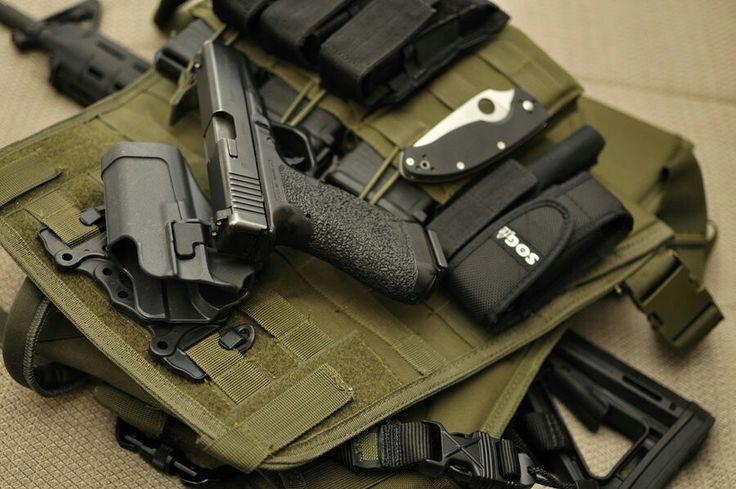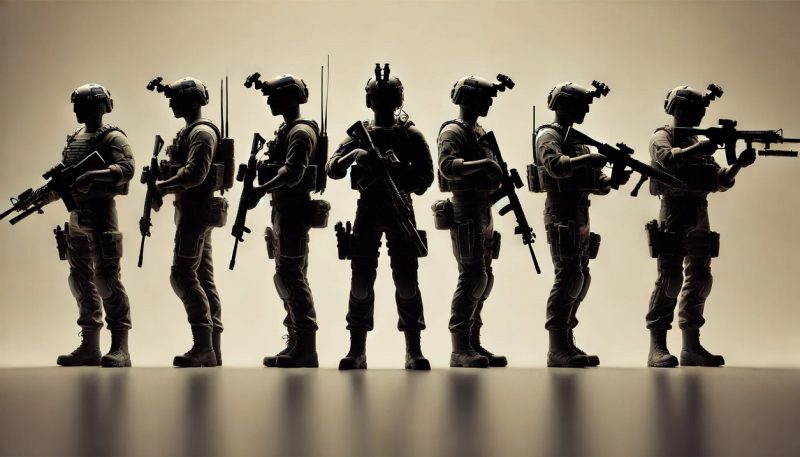The Glock 17 is one of the most popular service-duty pistols in the world. When it first appeared in the early 1980s, the Glock pistol seemed to break all the rules. Its design made no concessions to the popular view of what a gun should look like, primarily made of plastic.
There were widespread press reports about this sinister plastic pistol when it first appeared. Why plastic? Was it deliberately designed to be smuggled through security checkpoints at airports as the Glock intended as the latest weapon in the terrorist arsenal?
The Glock is firmly on the side of law and order. The slide, barrel, and trigger group are all metal, so it is not X-ray proof. And the Glock is now in widespread service with armies and police forces worldwide, with over two million manufactured. Around 40 % of American law enforcement agencies that use automatic pistols have adopted the Glock.
Non-traditional pistol
Part of the reason for Glock’s unusual features is that a traditional firearms maker did not design it. Glock was founded in Austria by Gaston Glock, an engineer who specialized in manufacturing plastic and steel components. When the Austrian Army held a competition to find a new service pistol in the 1980s, Glock entered his revolutionary pistol design.

The Glock’s receiver is rigid plastic, resistant to heat and cold. The old military badge of ‘Keep It Simple’ has been rigorously applied in the design of the Glock. It has only 33 parts and can be stripped in seconds. Best of all, it has no external safety catch to release and so nothing to remember in the stress of action.
Unlike almost all pistols in military service, the Glock is ready to fire from the moment it leaves your holster; draw, and the fire is all you need to do. A group of internal safety mechanisms keeps the weapon safe until the trigger is pulled.
Military use
The 9mm Glock 17 is the most widely used version. It is a great handgun adopted by the Austrian Army and by armies and special operations units worldwide. The Glock 18 is a fully automatic version, used as a compact machine pistol. To prevent unauthorized conversations, the operating parts are not interchangeable with the Glock 17.

Its most tremendous commercial success has been in the United States, with police and civil users. To meet the needs of this rapidly expanding market, the basic design has been adapted to other calibers. Glock was one of the first manufacturers to launch a 10mm (0.39-in) Glock 20. One more step in search of the ultimate pistol cartridge, the 10-mm is a far more lethal round than the standard 9mm (0.35-in) Parabellum used by most armies. The Glock 21 is chambered for the .45 ACP round, while the Glock 22 and 23 fire the popular .40 Smith and Wesson round. Smaller examples of the Glock have been manufactured in all calibers, primarily for plain-clothed police officers to carry concealed.
The Glock model of functional design may give offended traditionalists, but its worldwide success speaks for its quality.
Technical specifications
| Caliber: | 9*19 mm Parabellum |
| Length overall: | 186 mm |
| Barrel length: | 114 mm |
| Weight: | Empty 0.63 kg (1lb 5 oz); loaded 0.88 kg (1 lb 15 oz) |
| Muzzle velocity: | 350 mm (1.148 ft) per second |
| Magazine capacity: | 17 rounds |
Today, the Glock pistols are among the most used service weapons worldwide. It is used with the British Armed Forces, French Special Forces, Iraqi Security Forces, Latvian Military, Norwegian Armed Forces, and Swedish Armed Forces. Also, US Navy SEALs are tempting to shift from Sig Sauer to Glock 19.







I had the 3 gen Glock 17 and my friend who is in law enforcement liked it better than me so I sold it to him.I regret that but I have a Glock 22 in 40 cal 4 gen so it’s not so bad.
I have several Glocks and spent 29 years in the US Marines in different capacities. I had to get over the looks of the Glock. It seemed bulkier and looked more like a brick than a pistol. Once I got over myself and gave Glock a fair chance, I haven’t looked back. It’s the most dependable, accurate and people proof pistol I’ve used. I carry one (or two) at all times for defense reasons only. I trust them to save my family and myself in any situation. I’ve never had one fail me on the range and I know they wouldn’t when it really matters. I highly recommend them.
In the photo in this article with the caption: “A SWAT operator brandishing his Glock 17 (Photo: XY)”, the pistol in the photo is, in fact a Glock 22, not a Glock 17. Read the “22” on the front of the slide. If you’re going to write about a Glock 17, you can at least use a CORRECT photo of a Glock 17. It does appear that the author doesn’t know much about the subject matter.